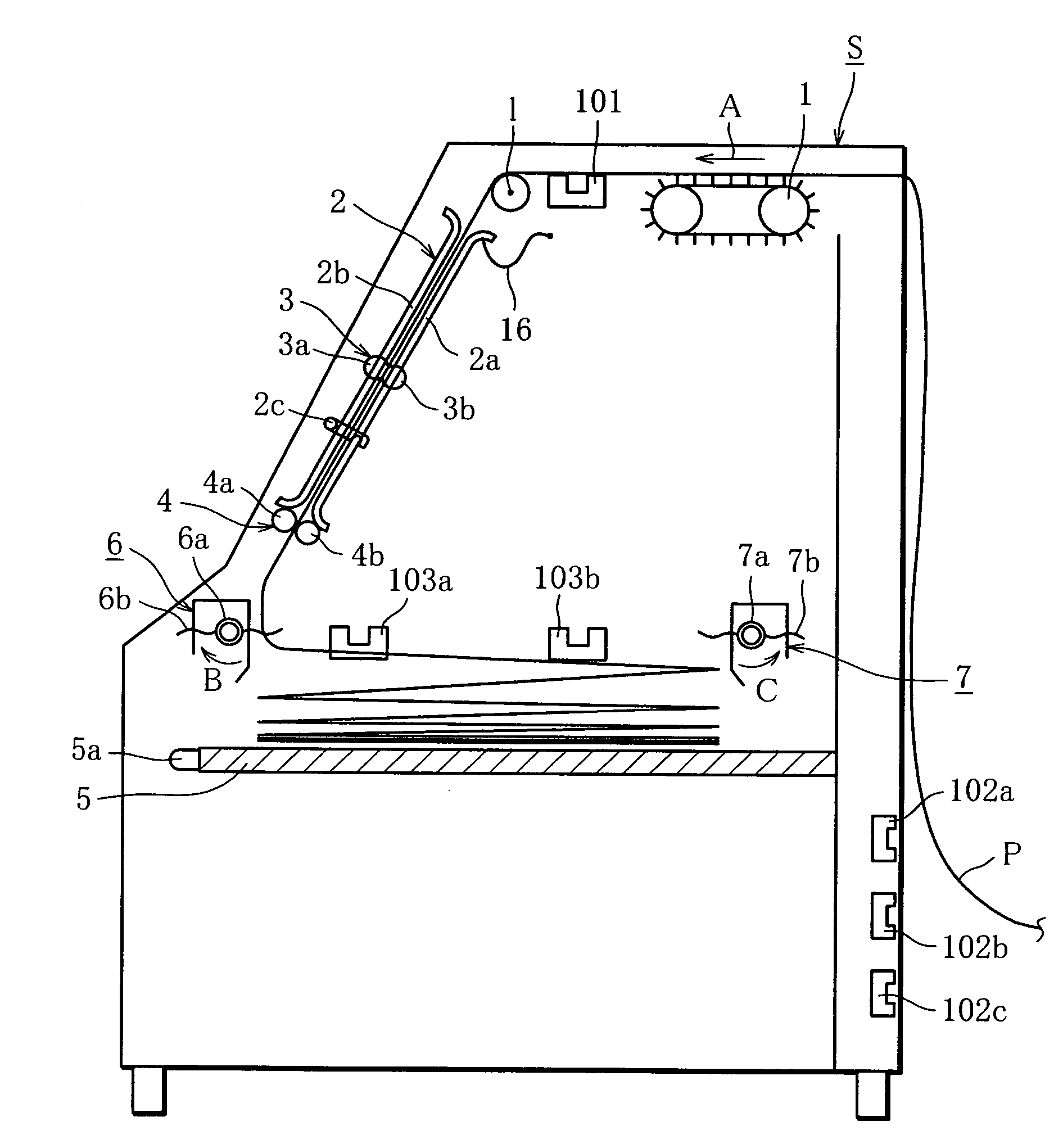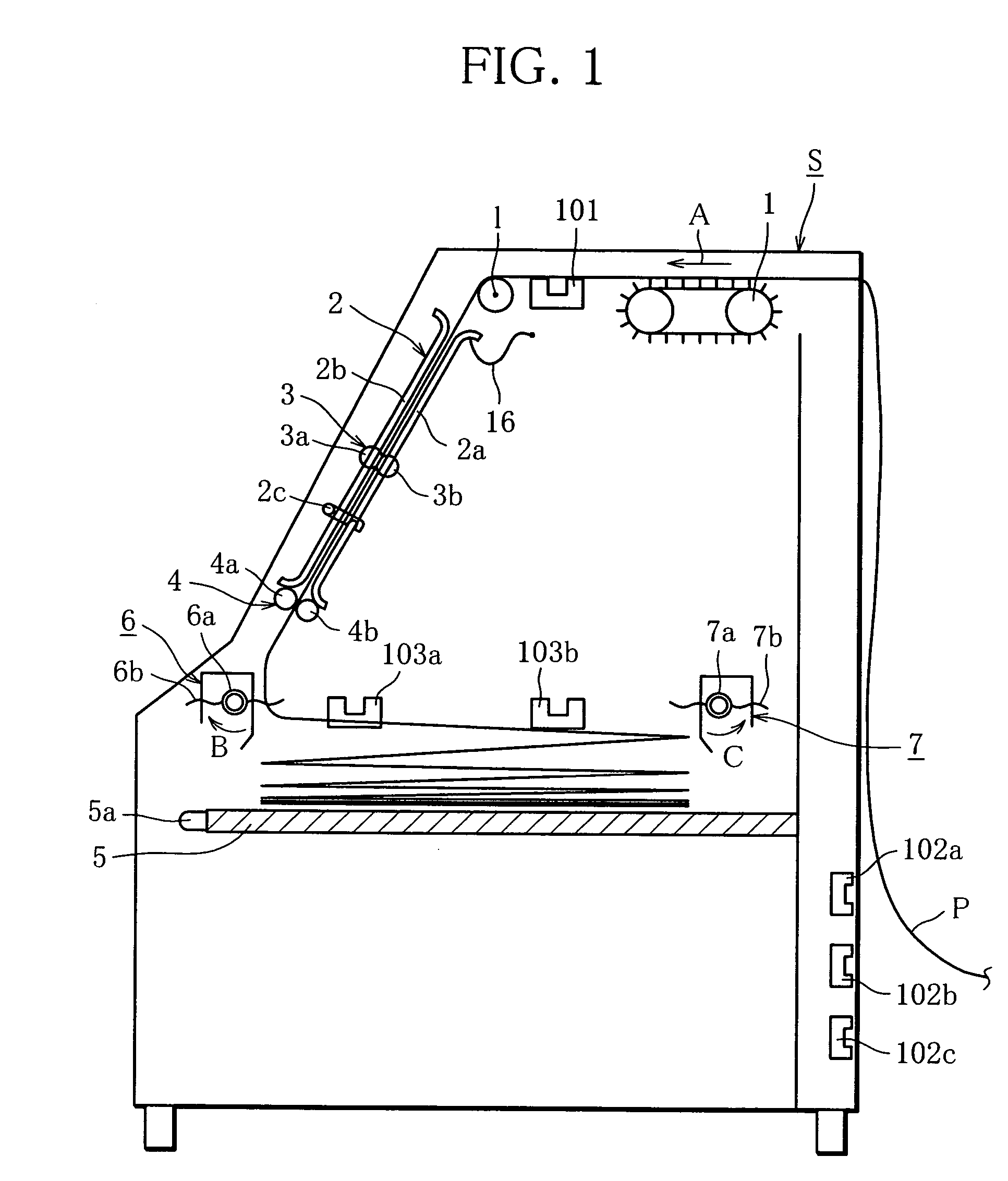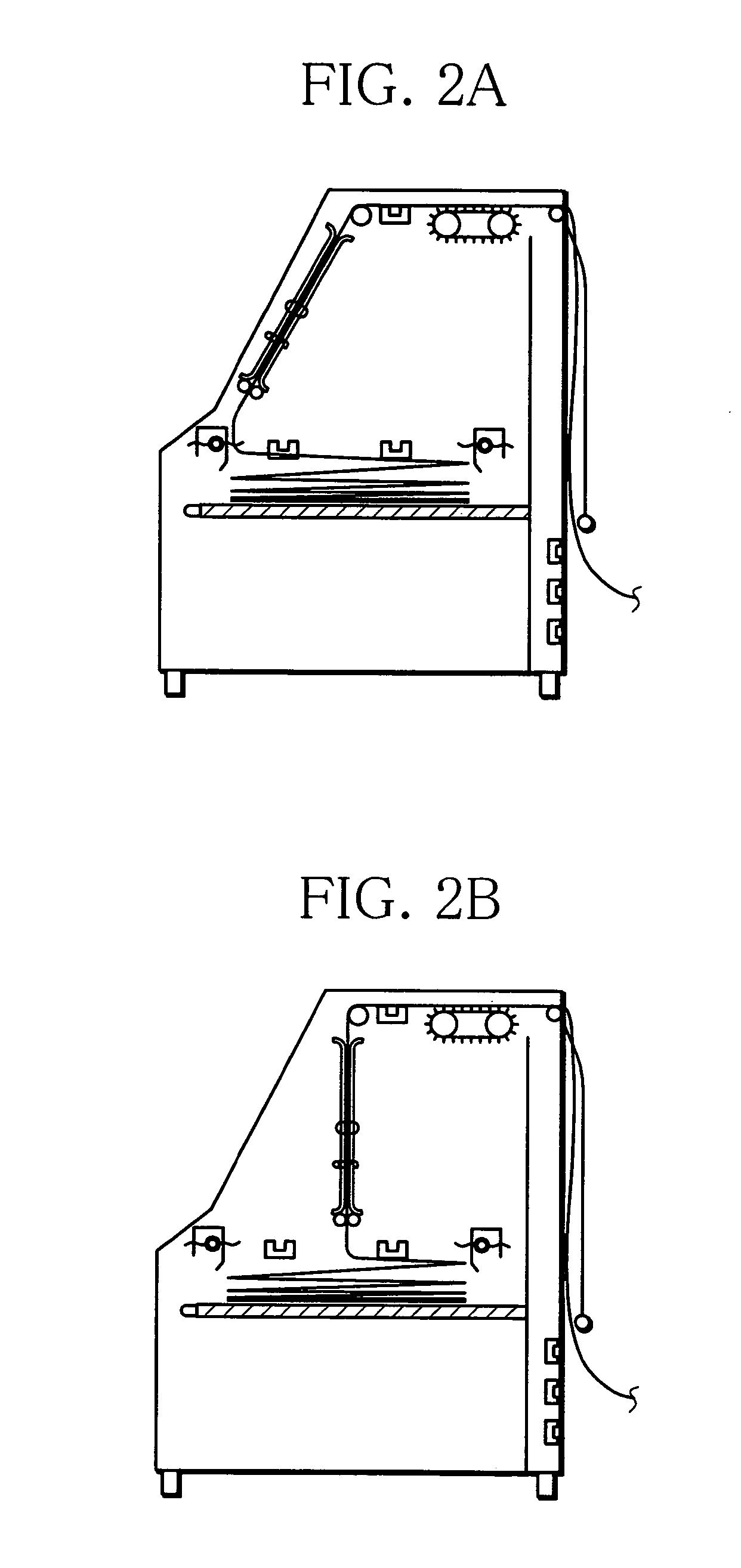Folding device and printing system
a printing system and folding device technology, applied in the field of folding devices, can solve the problems of increasing the rigidity of paper, and affecting the folding effect of continuous paper, so as to facilitate maintenance, prevent the occurrence of folding defects, and facilitate continuous paper feed.
- Summary
- Abstract
- Description
- Claims
- Application Information
AI Technical Summary
Benefits of technology
Problems solved by technology
Method used
Image
Examples
Embodiment Construction
[0109]An embodiment of the present invention will be described below with reference to drawings.
[0110]FIG. 1 is a sectional side view of a folding device according to one embodiment of the present invention.
[0111]In FIG. 1, reference character “P” represents continuous paper to be folded, and “S” denotes the folding device. “1” denotes a pin tractor serving as a feeding member for feeding the continuous paper P. The pin tractor feeds the continuous paper P at constant rate in a direction of arrow A in FIG. 1.
[0112]FIG. 8 shows details of a periphery of the pin tractor. The pin tractor is made up of a pair of pin-tractor units 1a and 1b located in both width-directional edges of the paper. Pins 25 disposed on pin belts 24 of the pin tractors 1a and 1b, which is arranged in both the edges of the continuous paper P, are fit into sprocket holes 26 of both edge portions of the continuous paper P, to thereby set the continuous paper P onto the pin tractors 1a and 1b. The pin tractors 1a a...
PUM
| Property | Measurement | Unit |
|---|---|---|
| length | aaaaa | aaaaa |
| length | aaaaa | aaaaa |
| distance | aaaaa | aaaaa |
Abstract
Description
Claims
Application Information
 Login to View More
Login to View More - R&D
- Intellectual Property
- Life Sciences
- Materials
- Tech Scout
- Unparalleled Data Quality
- Higher Quality Content
- 60% Fewer Hallucinations
Browse by: Latest US Patents, China's latest patents, Technical Efficacy Thesaurus, Application Domain, Technology Topic, Popular Technical Reports.
© 2025 PatSnap. All rights reserved.Legal|Privacy policy|Modern Slavery Act Transparency Statement|Sitemap|About US| Contact US: help@patsnap.com



